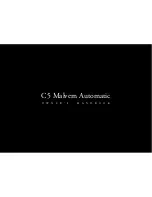
3
2
with flammable liquids, gases, or explosives.
Operation and safety
• Using an unapproved or incompatible power adapter, charger or battery may cause fire, explosion or
other hazards.
•
Ideal temperatures are -20°C to +45°C.
•
Avoid placing metal objects on the surface of the wireless charging cradle, as they could cause the
equipment to heat up and malfunction. Only use the wireless charging cradle in environments with an
ambient temperature ranging from 0°C to 45°C.
•
If the ambient temperature is too high, the wireless charger may stop working. If this occurs, you are
advised to stop wireless charging.
•
To keep the wireless charger in good condition, avoid using it inside a vehicle.
•
Adult supervision is advised if children are to use or come into contact with this product.
•
Please consult your doctor and the device manufacturer to determine if operation of your device may
interfere with the operation of your medical device.
• Switch off your wireless device when requested to do so in hospitals, clinics or health care facilities.
These requests are designed to prevent possible interference with sensitive medical equipment.
• Some wireless devices may affect the performance of hearing aids or pacemakers. Consult your service
provider for more information.
•
Pacemaker manufacturers recommend that a minimum distance of 15 cm be maintained between a
device and a pacemaker to prevent potential interference with the pacemaker. If using a pacemaker, hold
the device on the side opposite the pacemaker and do not carry the device in your front pocket.
•
Keep the device and the battery away from excessive heat and direct sunlight. Do not place them on or
in heating devices, such as microwave ovens, stoves, or radiators. Do not disassemble, modify, throw, or
squeeze them. Do not insert foreign objects into them, submerge them in liquids, or expose them to external







































